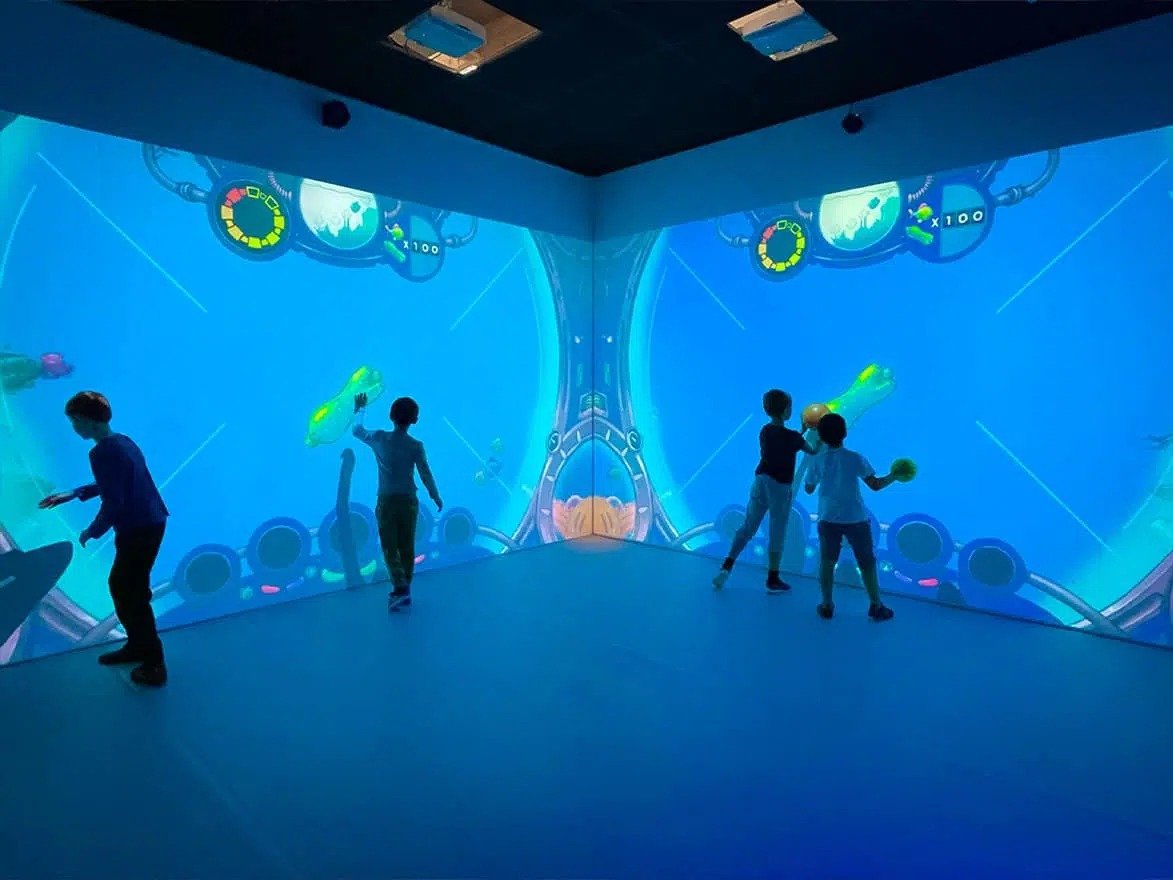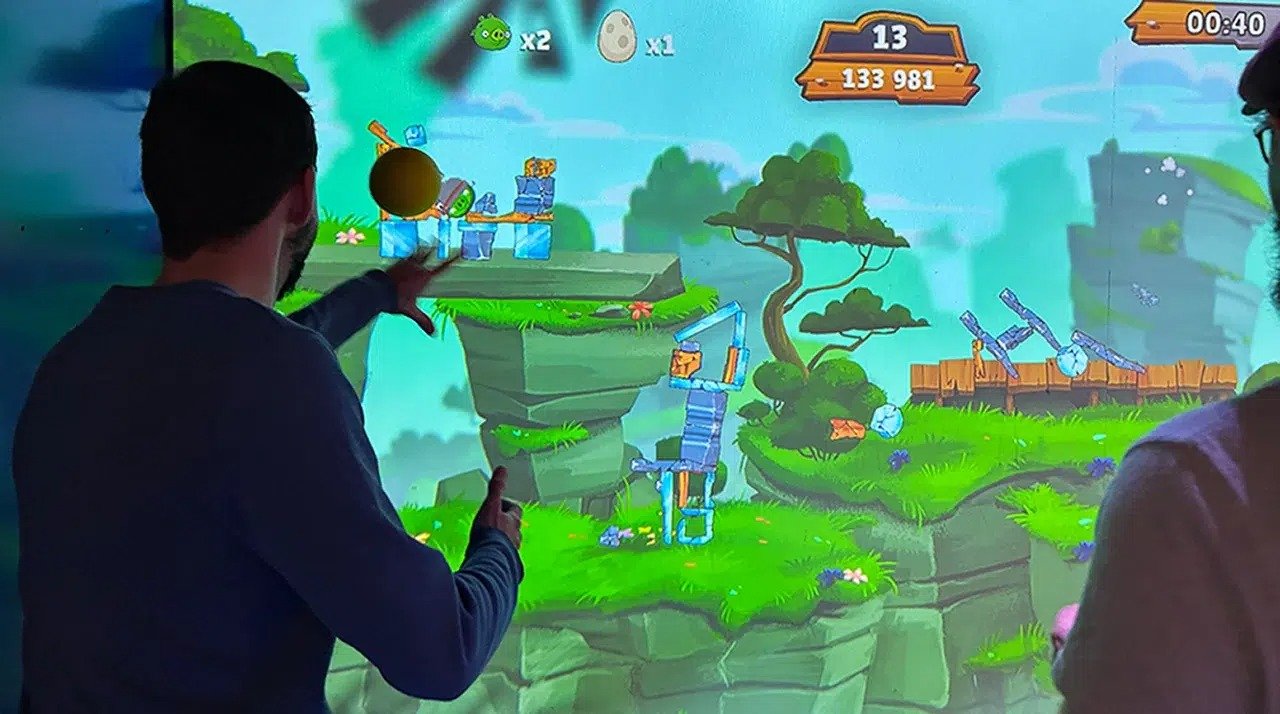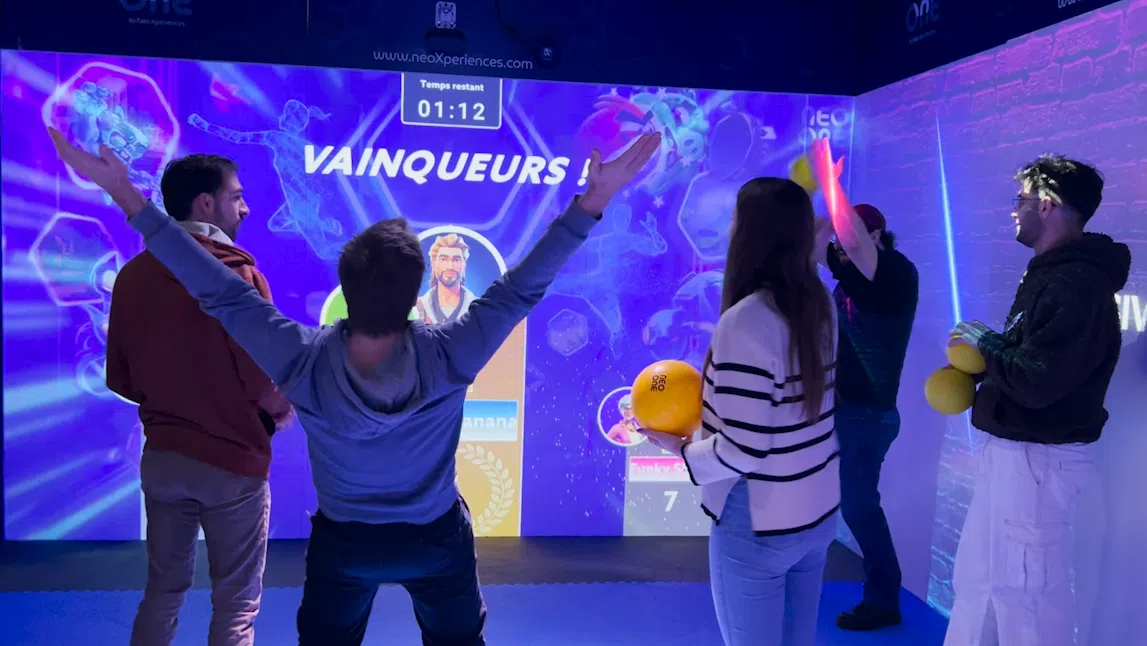Indoor parks and leisure centers are constantly seeking new ways to attract and retain visitors.
In an era where technology drives innovation in every industry, interactive gaming walls are emerging as a dynamic and engaging solution. These high-tech installations transform static spaces into vibrant, active environments, offering unforgettable experiences for guests of all ages.

Interactive gaming walls are more than just a screen on a wall. They are immersive platforms that blend physical activity with video game technology. A typical setup involves a video projector that casts a game onto a wall, while a sensor system detects player movements and interactions. This technology creates a “phygital” (physical + digital) space where participants can jump, run, and play directly with the game projected in front of them. This fusion of tech and fun makes for a highly engaging experience that encourages active play and social interaction.
One of the key benefits of these systems is their versatility. They can be installed in a variety of settings within an indoor park, such as trampoline zones, play areas, or even waiting rooms. Companies like Neoxperiences: interactive experiences, which specialize in these types of offerings that are easy to integrate into their system. Their “Neo-One” interactive walls and “Immersive Arenas” are designed to be a central attraction, capable of hosting a wide range of games and activities. These products are particularly ideal for leisure centers, playgrounds, and trampoline parks, as they provide an excellent way to diversify offerings and enrich the visitor experience.
The technology powering these modern attractions has a fascinating history rooted in decades of innovation. The conceptual seed was planted in the mid-20th century with early experiments in interactive art and computing. Pioneers explored the idea of creating responsive environments using light and sound, but the high costs and limited technology kept them largely confined to academic or artistic circles. The real breakthrough came with the advent of more accessible computer vision and motion-tracking technology. Initially, these tools were developed for industrial and military applications, but as they became more compact and affordable, they found their way into commercial products.
A significant turning point for public recognition came with the introduction of consumer gaming consoles that used motion control, such as the Nintendo Wii and later, Microsoft’s Kinect. These devices popularized the concept of using one’s entire body as a controller, making the idea of an interactive wall intuitive and exciting for the general public. From there, companies began adapting this technology for large-scale, public installations. Early examples were often seen in museums, trade shows, and corporate lobbies, designed to create a sense of wonder and engagement. Over time, as the hardware became more robust and the software more sophisticated, the technology was refined to handle the wear and tear of high-traffic environments like indoor parks.
The appeal of interactive gaming walls is broad and profitable. For children and teenagers, they offer a fresh and exciting alternative to traditional play equipment, combining the familiarity of video games with the health benefits of physical activity. For parents and park managers, they are an attractive investment that can lead to increased customer loyalty and repeat visits. The installations are built for durability and are designed to be a long-lasting attraction.
Ultimately, interactive gaming walls represent the future of indoor entertainment. They combine cutting-edge technology with the fundamental human desire for fun and play. By transforming ordinary walls into captivating gaming experiences, they provide a powerful tool for indoor parks to stand out in a competitive market. They are a testament to how technology can be used to create more active, engaging, and memorable recreational spaces, ensuring that visitors leave with a feeling of exhilaration and a desire to return.







